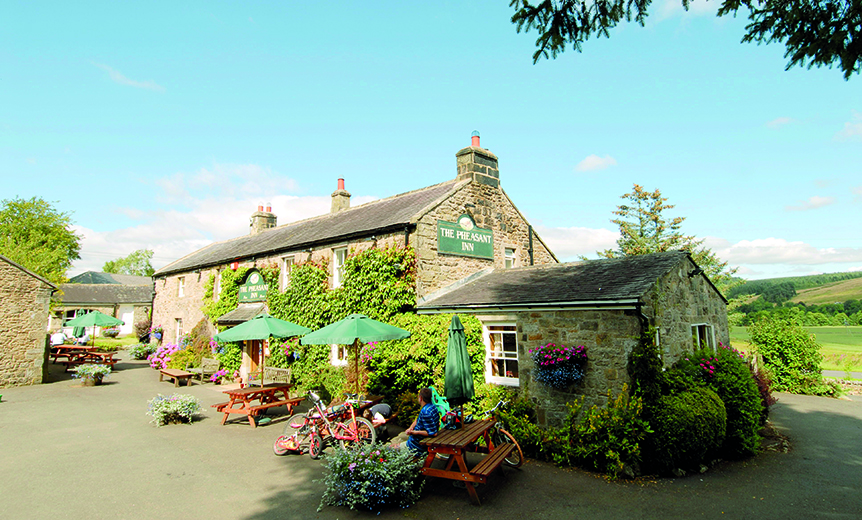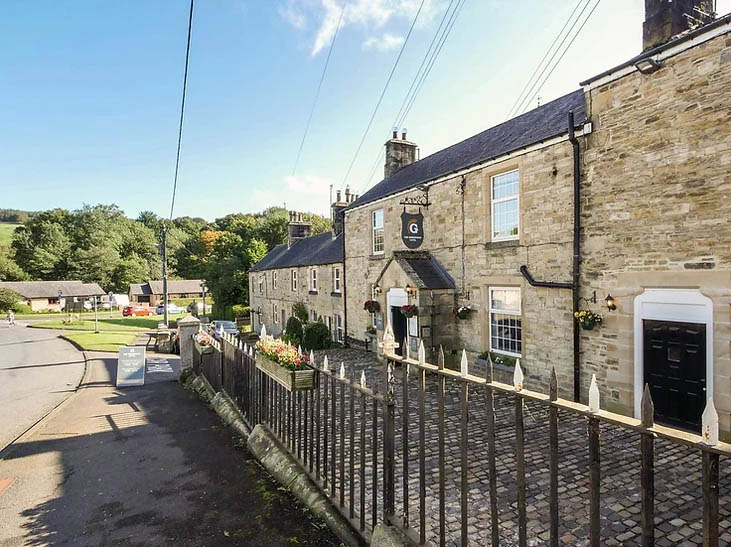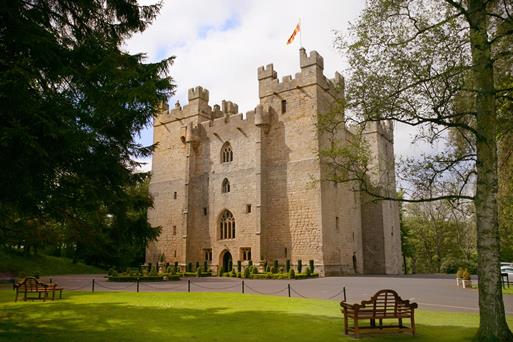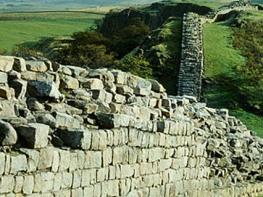Landal Kielder Waterside is situated on the shore of the stunning Kielder Reservoir in…
Bull Crag

6.25 miles (10.1kms)
About the walk
Since the completion of the Kielder Reservoir in 1980, both the lake and surrounding forest have been developed to exploit their natural qualities and outdoor setting to the full. Recreation and wildlife conservation are important objectives of both the Forestry Commission and Northumberland Water, and sit well beside the reasons for which they were created – the commercial production of timber and the provision of drinking water. Sympathetic management practices developed over the latter part of the 20th century have shown that such diverse goals are not incompatible, and today's forest park is a vibrant demonstration of success.
A vast adventure playground
The various attractions within the park draw more than 370,000 visitors a year, with untold numbers on top of that coming simply to walk or cycle through the woods. Yet, with over 250 square miles (647sq km) to explore, there is plenty of room for everyone and most places will hardly see a soul, even on the busiest bank holiday weekend. Indeed, the Campaign to Protect Rural England has called it the most tranquil spot in the country. A vast adventure playground, the lake offers a range of water activities from yacht racing to fishing, while the miles of forest tracks and paths offer anything from a gentle stroll or horseback ride to demanding technical mountain bike trails or long distance walks that require tip-top fitness and practised navigational abilities. Less energetic pursuits include a visit to the park's own observatory, which exploits the area's dark skies to give some of the best views of the heavens in the country.
A home for wildlife
Go almost anywhere and you are likely to encounter something of the park's prolific wildlife. Spring and early summer bring out countless flowers in the clearings amongst the trees, which themselves sparkle in the infinite shades of new-growth green. Birds abound, a particularly welcome arrival to the park being the osprey, which came to breed in 2009 after being absent for 200 years. This is one of only three breeding sites in England, and it is hoped that the birds will settle to become an annual spectacle. They are one of the 'Super Six' species to be found here, the others being: roe deer – a fairly common sight if you go quietly; red squirrels – becoming rare across the country but still thriving here; otters – secretive creatures often keeping to the remoter reaches; shrews – hardly seen, but keep your eyes open for movements in the undergrowth; pipistrelle bats – a small creature most likely to be seen flying around at dusk; and finally salmon – visit the salmon centre at Kielder Castle to learn about its fascinating life cycle. Of course, there's much more besides and you can join one of the ranger-led activities such as pond dipping, deer safaris, mini-beast hunts, family nature walks or bat nights, details of which can be found on the park's website.
Walk directions
From the car park, follow the exit drive past the reception building (on your left). After crossing a bridge but just before the Birds of Prey Centre, turn off left onto a woodland trail. Walk above a narrow inlet to a junction. Keep ahead, the way signed past 'Shadow', one of the many sculptures created in the park, to the Squirrel Hide. Beyond the hide and a viewpoint overlooking the lake, the path winds down, joining with another to reach a parking area. Cross to pick up the ongoing path behind the ski club building, skirting a small bay to a junction marked by a massive signpost.
Turn right, climb past Frey's Cabin, swing round a right bend and walk on up the open hillside before eventually descending to a junction. Following 'Lakeside Way' signs go right and first left, and before long you'll reach another large signpost.
The way lies ahead, now signed to Leaplish Waterside Park. The path winds on above a pretty inlet, studded with boats bobbing at their moorings. Reaching a crossing of paths, turn right, still with the lakeside way. Ultimately reaching the nose of the Bull Crag peninsula, the path sweeps around the back of a narrow inlet.
The path continues around the point, occasional 'Lakeside Way' markers counting down the miles back to Leaplish. Breaking out from the trees, the path suddenly joins a stretch of tarmac road complete with a white carriageway dividing line. It is part of the old road that ran along the valley before it was flooded by the completion of the dam. The railway, which followed the other side of the valley, suffered a similar fate. The road soon dips back beneath the water, leaving the path to turn into the shade of the trees. Before long you emerge into open meadow, and the burnished gleam of Frey's Cabin appears ahead. Retrace your outward track, back to Leaplish.
Additional information
Good woodland paths and trails, no stiles
Lakeside forest
Under control
OS Explorer 42 Kielder Water & Forest
Pay-and-display car park at Leaplish Waterside Park
At Leaplish Waterside Park
WALKING IN SAFETY
Read our tips to look after yourself and the environment when following this walk.
Find out more
Also in the area
About the area
Discover Northumberland
If it’s history you’re after, there’s heaps of it in Northumberland. On Hadrian’s Wall you can imagine scarlet-cloaked Roman legionaries keeping watch for painted Pictish warriors while cursing the English weather and dreaming of home. Desolate battlefield sites and hulking fortresses such as Alnwick, Dunstanburgh, Bamburgh and Warkworth are reminders that this, until not so very long ago, was a contested border region. The ruins of Lindisfarne bear witness to the region’s early Christian history.
Northumberland also has some of Britain’s best beaches. On summer days, and even in winter, you’ll see surfers and other brave souls making the most of the coast. Inland, there are some great walks and bike rides in the dales of the Cheviot Hills and the Simonsides – just hilly enough to be interesting, without being brutally steep. There's dramatic scenery in the High Pennines, where waterfalls plunge into deep valleys, and there are swathes of heather-scented moorland. Northumberland National Park covers over 400 square miles of moorland and valleys with clear streams and pretty, stone-built villages. It’s just the place for wildlife watching too. You’ll find flocks of puffins, guillemots and other seabirds around the Farne Islands, and seals and dolphins offshore.
Nearby stays
Restaurants and Pubs
Nearby experiences
Recommended things to do
Why choose Rated Trips?
Your trusted guide to rated places across the UK
The best coverage
Discover more than 15,000 professionally rated places to stay, eat and visit from across the UK and Ireland.
Quality assured
Choose a place to stay safe in the knowledge that it has been expertly assessed by trained assessors.
Plan your next trip
Search by location or the type of place you're visiting to find your next ideal holiday experience.
Travel inspiration
Read our articles, city guides and recommended things to do for inspiration. We're here to help you explore the UK.













